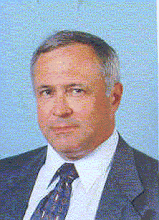Politicised Islam grows in Serbia's Sandzak
Link for the Excerpt:
14 March 2006
The strategic Muslim-majority Sandzak region of Serbia and Montenegro, which borders Kosovo and Bosnia-Herzegovina, has seen a marked increase in politicised Islam over the past few years. The trend is due to a variety of social and economic factors including political marginalisation, poverty and crime. Religious schools and an Islamic university are educating increasing numbers of young people, filling a vacuum left by failing republican and municipal administrations. There are also growing numbers of so-called Wahhabis who follow Islamic practices imported from Saudi Arabia.
This group of predominately young men operating outside the traditional Islamic community, Islamska Zajednica (IZ), played a leading role in orchestrating February's flag-burning demonstrations in the region's capital, Novi Pazar, protesting against newspaper cartoons of the prophet Mohammed first published in Denmark. Political and social marginalisation is nothing new in the Sandzak, an ethnically mixed Bosniak-majority region that is considered along with Kosovo to be one of the few potential sources of conflict left in the territory of the former Yugoslavia.
While Islamic radicalism remains largely a chimera for now, imams, international observers, Bosniaks (Muslim Slavs) and Serbs alike warn that disaffection with spiralling unemployment, crime and corruption could result in foreign forms of Islam gaining ever more adherents among a disillusioned younger generation.
The strategic Muslim-majority Sandzak region of Serbia and Montenegro, which borders Kosovo and Bosnia-Herzegovina, has seen a marked increase in politicised Islam over the past few years. The trend is due to a variety of social and economic factors including political marginalisation, poverty and crime.
[End of non-subscriber extract.]
208 of 2,064 words
14 March 2006
The strategic Muslim-majority Sandzak region of Serbia and Montenegro, which borders Kosovo and Bosnia-Herzegovina, has seen a marked increase in politicised Islam over the past few years. The trend is due to a variety of social and economic factors including political marginalisation, poverty and crime. Religious schools and an Islamic university are educating increasing numbers of young people, filling a vacuum left by failing republican and municipal administrations. There are also growing numbers of so-called Wahhabis who follow Islamic practices imported from Saudi Arabia.
This group of predominately young men operating outside the traditional Islamic community, Islamska Zajednica (IZ), played a leading role in orchestrating February's flag-burning demonstrations in the region's capital, Novi Pazar, protesting against newspaper cartoons of the prophet Mohammed first published in Denmark. Political and social marginalisation is nothing new in the Sandzak, an ethnically mixed Bosniak-majority region that is considered along with Kosovo to be one of the few potential sources of conflict left in the territory of the former Yugoslavia.
While Islamic radicalism remains largely a chimera for now, imams, international observers, Bosniaks (Muslim Slavs) and Serbs alike warn that disaffection with spiralling unemployment, crime and corruption could result in foreign forms of Islam gaining ever more adherents among a disillusioned younger generation.
The strategic Muslim-majority Sandzak region of Serbia and Montenegro, which borders Kosovo and Bosnia-Herzegovina, has seen a marked increase in politicised Islam over the past few years. The trend is due to a variety of social and economic factors including political marginalisation, poverty and crime.
[End of non-subscriber extract.]
208 of 2,064 words


0 Comments:
Post a Comment
<< Home